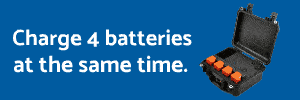Column 1: Image sequence.
Column 2: Second of week of the exposure timestamp in UTC time, with seconds expressed in GPS time format.
Column 3: GPS week of the exposure timestamp in UTC time, with seconds expressed in GPS time format.
Column 4: Offset (in mm) of the antenna phase center to camera CMOS sensor center in the north (N) direction at the time of exposure of each photo. It is positive when the CMOS center is in the north direction of the antenna phase center and negative when in the south direction.
Column 5: Offset (in mm) of the antenna phase center to camera CMOS sensor center in the east (E) direction at the time of exposure of each photo. It is positive when the CMOS center is in the east direction of the antenna phase center and negative when in the west direction.
Column 6: Offset (in mm) of the antenna phase center to camera CMOS sensor center in the vertical (V) direction at the time of exposure of each photo. It is positive when the CMOS center is below the antenna phase center and negative when the former is above the latter.
Column 7: real-time position latitude (Lat) of the CMOS center acquired at the time of exposure, in degrees. When the aircraft is in the RTK mode, its position is the RTK antenna phase center position plus the offset of the antenna phase center relative to the CMOS center at the time of exposure, with the RTK accuracy (centimeter level); and when the aircraft is in the GPS mode, its position is that detected by GPS single-point positioning plus the offset of the RTK antenna phase center relative to the CMOS center at the time of exposure, with GPS single-point positioning accuracy (meter level).
Column 8: real-time position longitude (Lon) of the CMOS center acquired at the time of exposure, in degrees.
Column 9: real-time height of the CMOS center acquired at the time of exposure, in meters. The height is a geodetic height (commonly known as the ellipsoid height), relative to the surface of the default reference ellipsoid (WGS84 is the default and can be set as other ellipsoids such as CGCS2000 via a different CORS station system/reference). Note that the above height is not based on the national 85 elevation datum or 56 elevation datum (normal height) or commonly used EGM96/2008 elevation datum (orthometric height) worldwide. For correlation of orthometric height, normal height, and geodetic height, refer to the following link:
1-Mean Sea Level, GPS, and the Geoid
Columns 10 to 12: Standard deviation (in meters) of positioning results in the north, east, and the vertical direction, describe the relative accuracy of positioning in the three directions.
Column 13: RTK status flag. 0: no positioning; 16: single-point positioning mode; 34: RTK floating solution; 50: RTK fixed solution. When the flag bit of a photo is not 50, it is recommended not to use this photo directly in map building.




